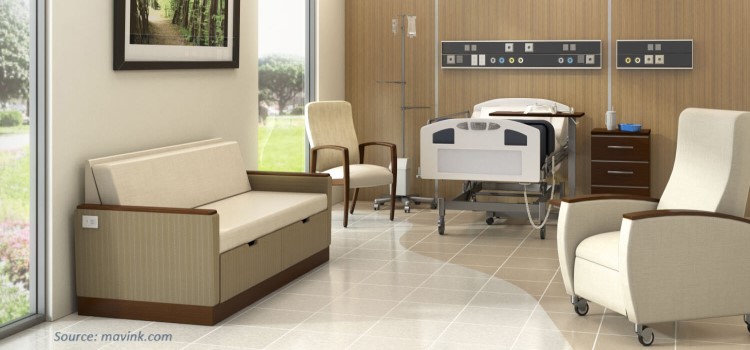Redefining Clean Living with Antimicrobial Furniture Leading the Way
Introduction
In today's world, where health and cleanliness are paramount concerns, the furniture industry is undergoing a significant transformation to meet the evolving needs of consumers. Antimicrobial furniture has emerged as a crucial solution, integrating advanced technologies to create safer and healthier living and working environments. This article explores the latest innovations, technologies, and trends driving the antimicrobial furniture industry, aiming to provide comprehensive insights into this rapidly growing sector.
The Evolution of Antimicrobial Furniture:
The concept of antimicrobial furniture traces back to the need for maintaining hygiene in healthcare settings. However, with the increasing emphasis on cleanliness in both residential and commercial spaces, antimicrobial furniture has gained widespread recognition. Manufacturers are leveraging cutting-edge materials and technologies to develop furniture that actively inhibits the growth of bacteria, viruses, mold, and other harmful microorganisms.
One of the key advancements in antimicrobial furniture is the integration of antimicrobial agents into materials during the manufacturing process. These agents, such as silver ions, copper nanoparticles, and quaternary ammonium compounds, are incorporated into the structure of the furniture, providing long-lasting protection against microbial contamination. Additionally, surface coatings containing antimicrobial properties are applied to furniture pieces, ensuring continuous defense against pathogens.
Advanced Technologies Shaping the Future:
1. Nanotechnology:
Nanotechnology employs nanoparticles of metals such as silver and copper, which possess a large surface area-to-volume ratio, enhancing their antimicrobial properties. These nanoparticles effectively disrupt bacterial cell membranes, inhibiting microbial growth. Incorporated into furniture surfaces or coatings, nanotechnology provides long-lasting protection against pathogens, contributing to enhanced hygiene standards in residential and commercial spaces.
2. Antimicrobial Polymers:
Antimicrobial polymers are engineered to release antimicrobial agents gradually, ensuring sustained protection against microbial colonization. Widely used in furniture manufacturing, these polymers offer eco-friendly alternatives to synthetic antimicrobial agents. By continuously releasing antimicrobial compounds, these polymers contribute to maintaining a hygienic environment while addressing consumer demand for sustainable furniture solutions.
3. Bio-Based Antimicrobial Compounds:
Derived from natural sources using biotechnological processes, bio-based antimicrobial compounds offer environmentally friendly alternatives to synthetic agents. These compounds exhibit potent antimicrobial properties against a wide range of pathogens, addressing consumer preferences for sustainable and eco-conscious furniture solutions. By harnessing the power of nature, bio-based antimicrobial compounds contribute to creating safer and healthier living environments.
4. Photocatalytic Coatings:
Photocatalytic coatings utilize light energy to trigger chemical reactions that break down organic pollutants and inhibit microbial growth. Titanium dioxide (TiO2) is a common photocatalyst used in these coatings, which, when exposed to ultraviolet (UV) light, produces reactive oxygen species that degrade organic matter and deactivate microorganisms. By incorporating photocatalytic coatings into furniture surfaces, manufacturers can enhance indoor air quality and reduce the risk of microbial contamination.
5. Antibacterial Fabrics:
Antibacterial fabrics are engineered using specialized fibers or coatings that inhibit the growth of bacteria and fungi. Silver nanoparticles, for example, are incorporated into fabric fibers to impart antimicrobial properties, making them ideal for upholstery, curtains, and bedding. These fabrics not only provide protection against microbial colonization but also offer comfort and durability. With the increasing demand for hygienic textiles, antibacterial fabrics are becoming a staple in antimicrobial furniture design.
Innovative Design Concepts:
1. Self-Cleaning Surfaces:
Furniture with self-cleaning surfaces incorporates mechanisms for automatic sanitization, reducing the need for manual cleaning and maintenance. These surfaces enhance convenience and promote continuous hygiene, making them ideal for environments where cleanliness is paramount. By integrating self-cleaning technology, furniture manufacturers offer solutions that optimize hygiene standards while minimizing user effort.
2. Modular Furniture Designs:
Modular furniture designs allow for easy disassembly and cleaning, facilitating thorough sanitization of individual components. This design concept provides flexibility and adaptability in various settings, catering to the diverse needs of consumers. By enabling easy maintenance and cleaning, modular furniture promotes hygiene and prolongs the lifespan of furniture pieces, contributing to a healthier indoor environment.
3. Smart Furniture with Sensor Technology:
Smart furniture equipped with sensor technology detects microbial contamination and deploys targeted disinfection methods based on real-time data. These intelligent systems ensure optimal hygiene levels without requiring human intervention, making them ideal for high-traffic areas and shared spaces. By integrating sensor technology, furniture manufacturers offer innovative solutions that prioritize cleanliness and wellbeing in modern living environments.
4. Biomimetic Design Inspired by Nature:
Biomimetic design draws inspiration from natural antimicrobial strategies observed in the environment, such as the lotus effect. By mimicking these natural mechanisms, furniture surfaces exhibit enhanced resistance to microbial adhesion and growth. Integrating sustainable and nature-inspired design elements into furniture aesthetics, biomimetic design enhances both functionality and visual appeal. By embracing biomimicry, furniture manufacturers contribute to creating environments that promote health, sustainability, and wellbeing.
Meeting Consumer Expectations:
As consumers become increasingly conscious of hygiene and health-related concerns, their expectations from furniture manufacturers are evolving. Beyond aesthetics and comfort, consumers prioritize furniture that offers proactive protection against pathogens. Manufacturers are responding to these demands by investing in research and development to create innovative antimicrobial solutions that meet stringent safety and efficacy standards.
Moreover, the COVID-19 pandemic has accelerated the adoption of antimicrobial furniture across various sectors, including hospitality, education, and healthcare. Businesses are recognizing the importance of providing safe and hygienic environments for their customers and employees, driving the demand for antimicrobial furniture solutions. Additionally, regulatory agencies are establishing guidelines and certifications to ensure the effectiveness and safety of antimicrobial products in the market.
Conclusion:
The antimicrobial furniture industry is at the forefront of innovation, leveraging advanced technologies and design concepts to address the growing need for hygiene and cleanliness in residential and commercial spaces. From the integration of antimicrobial agents into materials to the development of self-cleaning surfaces and smart furniture systems, manufacturers are continuously pushing the boundaries of what is possible.
As consumer awareness regarding hygiene continues to rise, the demand for antimicrobial furniture is expected to surge further in the coming years. By prioritizing research, innovation, and sustainability, the antimicrobial furniture industry is poised to play a pivotal role in shaping the future of interior design and furnishing. With a focus on enhancing both health and wellbeing, antimicrobial furniture is not just a trend but a transformative force in creating safer and healthier living environments for all.
About the Author
 Sunanda Ghosh is a researcher with more than 3 years of experience. She has a passion for understanding consumer behavior and market trends, and uses her skills in innovative ways to gather and analyze data. Throughout her career, she has worked with a diverse range of global clients across various industries including technology, semiconductor, and energy. She is dedicated to providing valuable insights that can help shape a company's direction and drive success. The author can be reached at sunanda.ghosh@nextmsc.com
Sunanda Ghosh is a researcher with more than 3 years of experience. She has a passion for understanding consumer behavior and market trends, and uses her skills in innovative ways to gather and analyze data. Throughout her career, she has worked with a diverse range of global clients across various industries including technology, semiconductor, and energy. She is dedicated to providing valuable insights that can help shape a company's direction and drive success. The author can be reached at sunanda.ghosh@nextmsc.com


Leave a Reply